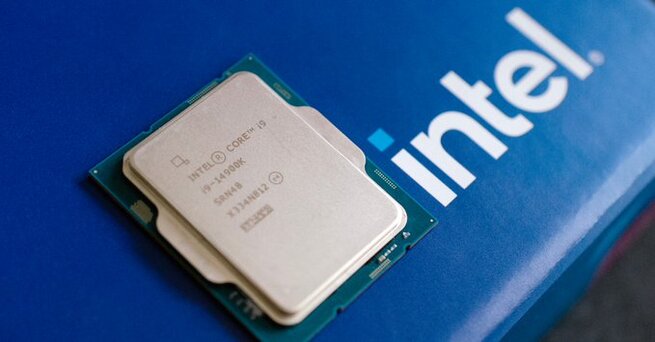Alerts

Intel’s tick-tock isn’t coming back, and everything else I just learned from the company’s latest Q3 2025 earnings call reveals a major shift in strategy. The chipmaker that once set the pace for Moore’s Law is now betting heavily on AI — even as it faces chip shortages and slow consumer demand.
With Windows 10 nearing its end of life, Intel expects PC industry growth to rebound — the most since 2021 when pandemic-driven demand surged. But this time, Intel’s focus isn’t just on personal computers. It’s about survival in a world dominated by Nvidia and AMD’s AI hardware momentum.
During Intel’s Q3 2025 earnings call, CEO Lip-Bu Tan and CFO David Zinsner confirmed that Intel’s priorities have changed. Despite achieving its first profit in nearly two years, largely due to financial boosts from Nvidia, SoftBank, and the U.S. government, Intel admitted it doesn’t have enough chips to meet current demand.
The shortage is expected to peak in early 2026, prompting Intel to divert capacity toward AI server chips rather than consumer processors. Tan explained that this strategy will strengthen Intel’s data center business while temporarily limiting entry-level PC chip availability.
“We expect CCG [Intel’s consumer chips] to be down modestly and DCAI [Intel’s server chips] to be up strongly,” Intel stated.
Following Nvidia and AMD’s lead, Intel plans to release new AI GPUs every year, marking a significant departure from its old development rhythm. While this keeps Intel relevant in the AI race, it also leaves gamers wondering when they’ll see another dedicated Intel gaming GPU lineup.
This new cadence could redefine Intel’s identity — from a company known for CPUs to one that’s all-in on AI innovation. The strategy suggests Intel wants to position itself as a core player in the AI infrastructure boom, even if it means delaying consumer-facing chip rollouts.
Intel’s upcoming Panther Lake chip, built on its advanced 18A process, is designed to show the world it still has what it takes to compete in performance computing. However, Intel confirmed it’s launching only one SKU this year, with more versions trickling out throughout 2026.
This slow rollout signals caution — a recognition that Intel’s manufacturing and supply chains aren’t yet at full strength. Still, Panther Lake represents a crucial test for Intel’s foundry ambitions and its ability to regain technological leadership from TSMC and Samsung.
Intel’s iconic tick-tock model, which alternated between architecture improvements and process shrinks every year, once set the industry standard. But that model no longer works in today’s AI-driven, power-hungry landscape.
Instead, Intel now embraces flexible development cycles, adjusting based on market shifts and AI demand. This pivot reflects a broader industry trend — agility over predictability. As Intel retools its fabs for AI-centric chips, the tick-tock rhythm that once defined its dominance becomes a relic of the past.
Financially, Intel’s survival this quarter came thanks to strategic investments and partnerships. With Nvidia, SoftBank, and U.S. government support, Intel gained the breathing room it needs to rebuild. These alliances underscore how critical Intel remains to the semiconductor ecosystem and national technology interests.
However, reliance on external funding also exposes Intel’s vulnerability. The company must now deliver meaningful innovation — fast — to prove its relevance in the AI era and justify these massive lifelines.
Intel is walking a fine line between meeting short-term financial goals and preparing for a long-term AI future. Its choice to prioritize server and AI chips could help reclaim enterprise trust but may risk losing momentum in the consumer CPU market.
The company’s upcoming years will determine whether this AI-first strategy revives Intel’s legacy or redefines it entirely. Either way, Intel’s tick-tock isn’t coming back — and everything we’ve just learned makes one thing clear: this is a new Intel, one betting everything on the next wave of computing.
Intel’s tick-tock isn’t coming back as the company embraces flexible release cycles.
AI GPUs will now launch annually, mirroring Nvidia’s and AMD’s strategies.
Intel’s Q3 2025 profit came after nearly two years of losses.
AI server chips take priority over consumer CPUs amid supply shortages.
Panther Lake and 18A process will roll out gradually through 2026.
Intel’s transformation is both ambitious and risky. Its decision to abandon the old tick-tock model in favor of AI-centric agility marks a pivotal turning point. Whether this gamble restores Intel’s dominance or cements it as an AI infrastructure player remains to be seen — but one thing’s certain: the company is no longer playing by its old rules.
𝗦𝗲𝗺𝗮𝘀𝗼𝗰𝗶𝗮𝗹 𝗶𝘀 𝘄𝗵𝗲𝗿𝗲 𝗿𝗲𝗮𝗹 𝗽𝗲𝗼𝗽𝗹𝗲 𝗰𝗼𝗻𝗻𝗲𝗰𝘁, 𝗴𝗿𝗼𝘄, 𝗮𝗻𝗱 𝗯𝗲𝗹𝗼𝗻𝗴. We’re more than just a social platform — from jobs and blogs to events and daily chats, we bring people and ideas together in one simple, meaningful space.
